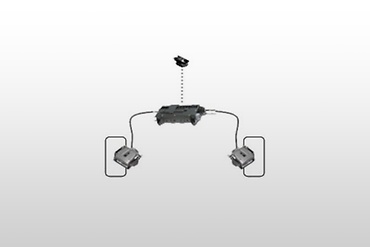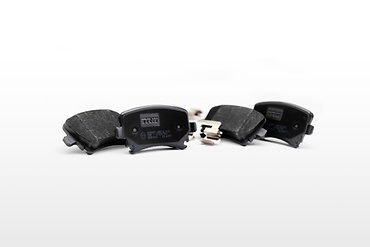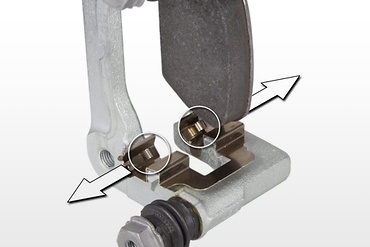Brake pad replacement is a critical part of vehicle maintenance. Whether you're working on gas-powered vehicles, hybrids, or electric vehicles (EVs), each platform presents its own challenges—and opportunities.
This guide outlines the differences between EV and traditional brake systems and gives you pro tips to improve performance and customer satisfaction during brake service.
Why Brake Pad Selection Matters
Choosing the correct brake pads is essential for ensuring optimal braking performance, minimizing noise and wear, maximizing longevity, and complying with environmental regulations. Whether you're servicing a traditional gas-powered vehicle or a fully electric model, selecting the right brake pads helps deliver safe, quiet, and reliable stopping power.
TRW Electric Blue Brake Pads – For EVs and Hybrids
TRW’s Electric Blue Brake Pads are purpose-built for the braking behavior of electric and hybrid vehicles. With over 9/10 in NVH (noise, vibration, harshness) scoring, they provide a smooth, quiet ride—especially important in quieter EV cabins.

Key Benefits:
- Copper-Free Technology: Complies with eco-regulations like California’s copper-free legislation and reduces dust.
- Longer Pad Life: Lower wear rates mean fewer replacements and happier customers.
- Quiet Operation: Ideal for low-noise EVs where brake sound is more noticeable.
TRW Ultra Brake Pads – For Gas-Powered Vehicles
For internal combustion engine (ICE) vehicles, TRW Ultra and Pro Brake Pads deliver the stopping power, comfort, and durability technicians’ demand.

Key Benefits:
- High-Performance Friction: Smooth, consistent stops in all driving conditions.
- Hardware Included: Makes installation quick and seamless.
- Durable Design: Handles the heat and load of everyday driving with ease.
Brake Pad Replacement Tips for EVs & Traditional Vehicles
Regardless of the type of vehicle, proper brake pad installation is essential for performance and safety. Start by consulting the service manual—many electric vehicles (EVs) use regenerative braking and may require special procedures, such as disabling regen during service or enabling a burnish mode to properly seat the new pads.
Next, be sure to thoroughly clean the caliper and bracket. Removing any dirt and corrosion helps prevent noise and uneven wear over time. After installation, it’s important to perform a proper test drive. For EVs, activate burnish mode if available to ensure the pads seat correctly. For internal combustion engine (ICE) vehicles, follow a standard bedding-in process to maximize pad performance.
Lastly, always check for pulsation or noise. Measuring rotor thickness and lateral runout can help prevent brake judder and ensure customer satisfaction. Uneven wear is a common cause of brake noise and vibration—and unhappy customers.
Popular EVs Using TRW Electric Blue Brake Pads
TRW Electric Blue pads are compatible with many leading EV models, including the Tesla Model 3, Model S, and Model X; Chevrolet Bolt EV; Nissan Leaf; Ford Mustang Mach-E; BMW i3 and i8; Volkswagen ID.4; Hyundai Kona Electric; and Audi e-tron.
Whether you're an independent mechanic or a shop owner, TRW Electric Blue pads make servicing EVs easier—and more profitable.
Watch the Video: Brake Pad Replacement Tips for EVs vs Gas Vehicles

Why Choose TRW Brake Pads?
No matter what you drive—electric, hybrid, or gas-powered—TRW has a brake solution tailored to your needs. For EVs and hybrids, TRW Electric Blue pads are specifically engineered to work seamlessly with regenerative braking systems. They’re copper-free, exceptionally quiet, and environmentally friendly.
If you’re servicing a gas-powered vehicle, TRW Ultra brake pads are the go-to choice. Designed for durability and high performance, they also feature a quick and easy installation process—saving you valuable time in the bay.
Across the board, TRW brake pads are made with premium materials that reduce noise and dust while delivering reliable stopping power. Backed by trusted OE heritage, they’re a smart, dependable choice for every type of vehicle.


